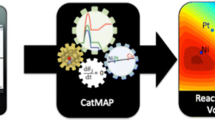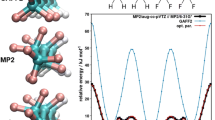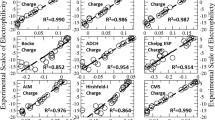Abstract
The ability to accurately predict the oxidation and reduction potentials of molecules is very useful in various fields and applications. Quantum mechanical calculations can be used to access this information, yet sometimes the usefulness of these calculations can be limited because of the computational requirements for large systems. Methodologies that yield strong linear correlations between calculations and experimental data have been reported, however the balance between accuracy and computational cost is always a major issue. In this work, linear correlations (with an R2 value of up to 0.9990) between DFT-calculated HOMO/LUMO energies and 70 redox potentials from a series of 51 polycyclic aromatic hydrocarbons (obtained from the literature) are presented. The results are compared to previously reported linear correlations that were obtained with a more expensive computational methodology based on a Born-Haber thermodynamic cycle. It is shown in this article that similar or better correlations can be obtained with a simple and cheaper calculation.


Similar content being viewed by others
References
Hagberg DP, Marinado T, Karlsson KM, Nonomura K, Qin P, Boschloo G, Brinck T, Hagfeldt A, Sun L (2007) Tuning the HOMO and LUMO energy levels of organic chromophores for dye sensitized solar cells. J Org Chem 72:9550–9556. doi:10.1021/jo701592x
Hagberg DP, Yum JH, Lee H, De Angelis F, Marinado T, Karlsson KM, Humphry-Baker R, Sun L, Hagfeldt A, Grätzel M, Nazeeruddin MK (2008) Molecular engineering of organic sensitizers for dye-sensitized solar cell applications. J Am Chem Soc 130:6259–6266. doi:10.1021/ja800066y
Scharber MC, Mühlbacher D, Koppe M, Denk P, Waldauf C, Heeger AJ, Brabec CJ (2006) Design rules for donors in bulk-heterojunction solar cells—towards 10 % energy-conversion efficiency. Adv Mater 18:789–794. doi:10.1002/adma.200501717
Gust D, Moore TA, Moore AL (2001) Mimicking photosynthetic solar energy transduction. Acc Chem Res 34:40–48. doi:10.1021/ar9801301
Lee C, Lu H, Lan HY, Liang Y, Yen W, Liu Y, Lin Y, Diau EW, Yeh C (2009) Novel zinc porphyrin sensitizers for dye-sensitized solar cells: synthesis and spectral, electrochemical, and photovoltaic properties. Chem Eur J 15:1403–1412. doi:10.1002/chem.200801572
Meisner JS, Sedbrook DF, Krikorian M, Chen J, Sattler A, Carnes ME, Murray CB, Steigerwald M, Nuckolls C (2012) Functionalizing molecular wires: a tunable class of α, ω-diphenyl-μ, ν-dicyano-oligoenes. Chem Sci 3:1007–1014. doi:10.1039/C2SC00770C
Previtali CM (1995) Solvent effects on intermolecular electron transfer processes. Pure & Appl Chern 67(1):127–134. doi:10.1351/pac199567010127
Lowe JP (1993) Quantum Chemistry, Second Edition. Academic Press. pp 273-275
Maccoll A (1949) Reduction potentials of conjugated systems. Nature 163:178–179. doi:10.1038/163178a0
Winget P, Weber EJ, Cramer CJ, Truhlar DG (2000) Computational electrochemistry: aqueous one-electron oxidation potentials for substituted anilines. Phys Chem Chem Phys 2:1231–1239. doi:10.1039/A909076B
Baik M, Friesner RA (2002) Computing redox potentials in solution: density functional theory as a tool for rational design of redox agents. J Phys Chem A 106:7407–7412. doi:10.1021/jp025853n
Schmidt AM, Busch M, Knapp EW (2005) One-electron reduction potential for oxygen- and sulfur-centered organic radicals in protic and aprotic solvents. J Am Chem Soc 127:15730–15737. doi:10.1021/ja0526923
Cardona CM, Li W, Kaifer AE, Stockdale D, Bazan GC (2011) Electrochemical considerations for determining absolute frontier orbital energy levels of conjugated polymers for solar cell applications. Adv Mater 23:2367–2371. doi:10.1002/adma.201004554
Davis AP, Fry AJ (2010) Experimental and computed absolute redox potentials of polycyclic aromatic hydrocarbons are highly linearly correlated over a wide range of structures and potentials. J Phys Chem A 114:12299–12304. doi:10.1021/jp106088n
Speelman AL, Gillmore JG (2008) Efficient computational methods for accurately predicting reduction potentials of organic molecules. J Phys Chem A 112:5684–5690. doi:10.1021/jp800782e
Lynch AJ, Speelman AL, Curry BA, Murillo CS, Gillmore JG (2012) Expanding and testing a computational method for predicting the ground state reduction potentials of organic molecules on the basis of empirical correlation to experiment. J Org Chem 77(15):6423–6430. doi:10.1021/jo300853k
Frisch MJ, Trucks GW, Schlegel HB, Scuseria GE, Robb MA, Cheeseman JR, Scalmani G, Barone V, Mennucci B, Petersson GA, Nakatsuji H, Caricato M, Li X, Hratchian HP, Izmaylov A. F, Bloino J, Zheng G, Sonnenberg JL, Hada M, Ehara M, Toyota K, Fukuda R, Hasegawa J, Ishida M, Nakajima T, Honda Y, Kitao O, Nakai H, Vreven T, Montgomery Jr. JA, Peralta JE, Ogliaro F, Bearpark M, Heyd JJ, Brothers E, Kudin KN, Staroverov VN, Kobayashi R, Normand J, Raghavachari K, Rendell A, Burant JC, Iyengar SS, Tomasi J, Cossi M, Rega N, Millam JM, Klene M, Knox JE, Cross JB, Bakken V, Adamo C, Jaramillo J, Gomperts R, Stratmann RE, Yazyev O, Austin AJ, Cammi R, Pomelli C, Ochterski JW, Martin RL, Morokuma K, Zakrzewski VG, Voth GA, Salvador P, Dannenberg JJ, Dapprich S, Daniels AD, Farkas Ö, Foresman JB, Ortiz JV, Cioslowski J, Fox DJ (2009) Gaussian 09, Revision A.02; Gaussian, Inc., Wallingford, CT
Lee C, Yang W, Parr RG (1988) Development of the Colle-Salvetti correlation-energy formula into a functional of the electron density. Phys Rev B 37:785–789. doi:10.1103/PhysRevB.37.785
Becke AD (1988) Density-functional exchange-energy approximation with correct asymptotic behavior. Phys Rev A 38:3098–30100. doi:10.1103/PhysRevA.38.3098
Becke AD (1996) Density–functional thermochemistry. IV. A new dynamical correlation functional and implications for exact–exchange mixing. J Chem Phys 104:1040–1046. doi:10.1063/1.470829
Francl MM, Pietro WJ, Hehre WJ, Binkley JS, Gordon MS, DeFree DJ, Pople JA (1982) Self–consistent molecular orbital methods. XXIII. A polarization–type basis set for second–row elements. J Chem Phys 77:3654–3665. doi:10.1063/1.444267
Harihan PC, Pople JA (1973) The influence of polarization functions on molecular orbital hydrogenation energies. Theor Chim Acta 28:213–222. doi:10.1007/BF00533485
Rassalov V, Pople JA, Ratner M, Windus TL (1998) 6-31G* basis set for atoms K through Zn. J Chem Phys 109:1223–1229. doi:10.1063/1.476673
Barone V, Cossi M (1998) Quantum calculation of molecular energies and energy gradients in solution by a conductor solvent model. J Phys Chem A 102:1995–2001. doi:10.1021/jp9716997
Cossi M, Rega N, Scalmani G, Barone V (2003) Energies, structures, and electronic properties of molecules in solution with the C-PCM solvation model. J Comput Chem 24:669–681. doi:10.1002/jcc.10189
Acknowledgments
We would like to thank Dr. Jason G. Gillmore for very useful discussions and suggestions. Thanks as well to John J. Tomlin for his suggestions, and all the members of the Gust-Moore-Moore research group for inspirational conversations.
DDMH is supported by the National Science Foundation Graduate Research Fellowship Program (NSF-GRFP) under Grant No. DGE-0802261 and by the More Graduate Education at Mountain States Alliance (MGE@MSA) Alliance for Graduate Education and the Professoriate (AGEP) National Science Foundation (NSF) Cooperative Agreement No. HRD-0450137.
This work was supported as part of the Center for Bio-Inspired Solar Fuel Production, an Energy Frontier Research Center funded by the U.S. Department of Energy, Office of Science, Office of Basic Energy Sciences under Award Number DE-SC0001016.
Calculations were performed using the ASU Advance Computer Center Saguaro system.
Author information
Authors and Affiliations
Corresponding author
Electronic supplementary material
Below is the link to the electronic supplementary material.
ESM 1
(XLS 288 kb)
Rights and permissions
About this article
Cite this article
Méndez-Hernández, D.D., Tarakeshwar, P., Gust, D. et al. Simple and accurate correlation of experimental redox potentials and DFT-calculated HOMO/LUMO energies of polycyclic aromatic hydrocarbons. J Mol Model 19, 2845–2848 (2013). https://doi.org/10.1007/s00894-012-1694-7
Received:
Accepted:
Published:
Issue Date:
DOI: https://doi.org/10.1007/s00894-012-1694-7




